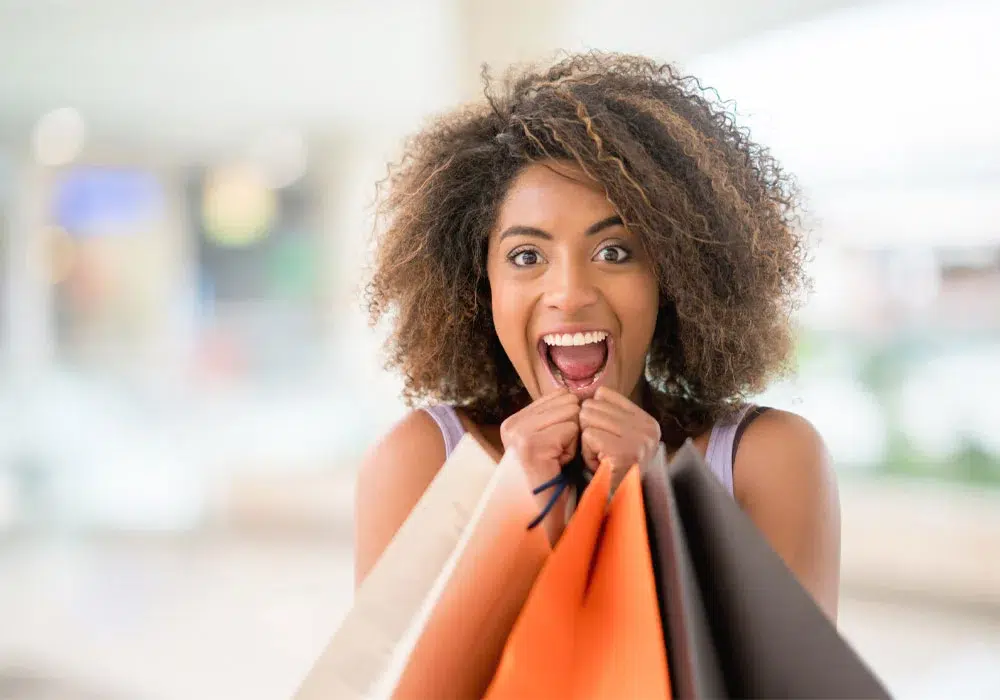What’s the purpose & why is this important?
This content style guide is designed to help Mad Mobile employees understand the brand’s voice while helping us write clear and consistent content across teams and channels. Please use this guide as a reference when you’re writing for Mad Mobile. The framing documents below can be utilized to get an overview of our restaurant and retail solutions, differentiators, and market landscape.
Brand Positioning
Mad Mobile is building next-generation digital and mobile experiences for over 21,000 major retail and restaurant locations worldwide. We offer modern point-of-sale solutions and products that elevate every transaction, personalizing the way businesses connect with their customers.
Mad Mobile’s voice is friendly, professional, and casual, while still displaying clear authority and experience with the restaurant and retail world from both a B2B and B2C perspective. Keep the following do’s and don’ts in mind when you are creating content.
Do’s
- Mad Mobile speaks to restaurateurs, retailers, and customers alike as a friendly expert. Use fun and engaging words that are backed up with robust research and an obvious mastery of the subject matter.
- Break down technical jargon without pedantic explanations.
- Utilize smaller paragraphs and break ideas down into discrete sections. Try to keep paragraphs around 4 sentences to avoid a “wall of text.”
Don’ts
- Avoid overly-aggressive sales mechanics. Do not state price points unless specified otherwise.
- Do not talk down to readers.
- Do not use negative connotations or be offensive.
Example Mad Mobile’s distinctive and secure CRM database technology.
Tone is dynamic. It’s how we adapt our voice to different situations. Our voice is how we want to be perceived by the public; therefore, our tone should accompany our voice. As you create content, keep its context in mind, since that will often dictate how you adapt your tone across different situations.
Clean – The technology does the talking. The copy needs to clearly explain what the technology does, as well as how it improves over existing tech and helps businesses achieve tangible results. Jargon is not necessary. The copy should have the voice of a real expert – a person who can explain a concept in words anyone will understand in a light-hearted way.
Do’s: Explain things in a clean and clear manner. Fully explain benefits and ease of installation/operation. Example
Don’ts: Talk down to customers or oversimplify benefits of software. Assume customers are tech-illiterate. Don’t be overly pedantic. Example
Evolving – We follow trends and tech developments and invent great ways to implement these features. Mad Mobile is continually evolving and striving to improve the restaurant and retail experience on every level. We use solid information from trusted sources, including our own customers.
Do’s: Provide data, research, examples. Showing > telling. Explain benefits over existing tech. Example
Don’ts: Focus on intangible results, or technology with a “cool factor” but few proven benefits. Example
Open – Mad Mobile understands and empathizes with our clients. We are flexible and open to new ideas and listen to all customer feedback. We are excited about new ideas in technology, and we want to show customers how they can make their businesses better.
Do’s: Pass along insights and knowledge while explaining benefits. Address customer concerns. Think like an operator. Example
Don’ts: Be too silly, informal, sarcastic, or offensive. Example
Mad Mobile appeals to a variety of buyer personas and the style and tone of your content must be adapted for your target audience. Keep in mind who your audience is, what their pain points are, and how they like to be communicated with.
Content Type
Mad Mobile content combines different styles to create a unified voice that showcases our unique technology. We aim to communicate directly with readers, simplifying complex ideas and building a connection through a friendly, engaging experience. We allow our technology to stand out, highlighting its distinctiveness and delivering a clear message that connects with our audience.
The content types that fulfill this are:
- Product service pages
- Blog posts
- Press and insights
- Resources – Case studies, eBooks, guides and whitepapers
- Social media
Graphics
The imagery in Mad Mobile’s content is equally as important as the copy. We aim to find high-quality photos that showcase the restaurant and retail industry, and capture realistic lifestyle concepts without being too cheesy.
Do’s:


Dont’s:


Formatting Conventions
Most of the grammar, punctuation, and capitalization instructions will be spelled out in the style guide. Refer to AP stylebook – https://www.apstylebook.com for an overview.
We follow title case capitalization formatting for our blog and page titles. Product service pages page titles also follow this format. On-page headlines for product service pages do not use this practice, see the next tab for capitalization details. Title case capitalizes the first letter of each word, except articles and short prepositions. Titles should be in H1 styling and subheadings should be set to H2 styling. Use the Capitalize My Title resource to check if your headline is formatted correctly.
- This is the Correct Formatting of a Headline
- This Is Not The Correct Way To Format A Headline
- This is also incorrect formatting for a headline
Title case capitalization examples:
- Titles of references (e.g., book titles, article titles) when they appear in the text of a paper
- Titles of inventories or tests
- Headings at Levels 1 and 2
- In headers, capitalize verbs, proper nouns, adjectives, and keywords.
Titles of periodicals—journals, magazines, or newspapers—which are also italicized (e.g., Journal of Counseling Psychology, The New York Times)
Use branded capitalization when necessary
- Mad Mobile
- CAKE (Product name, ex. CAKE Capital, CAKE Online Ordering)
- Concierge (Product name, ex. Concierge Clienteling, Concierge Connect)
- iPad
Do NOT capitalize
- Articles (the, to, in, a, an, at, etc.)
- Coordinating Conjunctions (and, but, for)
- Short words (less than 5 letters)
- Prepositions (at, by, from)
Oxford comma is the final comma in a list of things.
- Ex: Please bring me a pencil, eraser, and notebook.
- Ex: Please bring me a pencil, eraser and notebook.
Spell out all single digit numbers, but leave double digits as numerals.
- One (1)
- 22 Twenty-two
- Use “1.” “2.” etc. when numbering heading in blogs.
- Hyphen (-)
- Hyphens are used to join words to indicate that they have a combined meaning or that they are linked in the grammar of a sentence.
- Open compounds are written as separate words
- Printing press
- Car wash
- Chief of staff
- Hyphenate two or more words when they come before a noun , they modify and act as a single idea. This is called a compound adjective
- an all-in-one POS
- state-of-the-art design
- Do NOT use a hyphen after an adverb (not limited to but including most words ending in “-ly”)
- Ex: (“It was a poorly written book,” NOT “poorly-written“).
- Open compounds are written as separate words
- Hyphens are used to join words to indicate that they have a combined meaning or that they are linked in the grammar of a sentence.
- En dash (–)
- En dash is used to represent a span or range of numbers, dates, or time. There should be no space between the en dash and the adjacent material.
- Sport scores (5–3)
- Date ranges (1999–2005, 1980–83)
- Do NOT use spaces on either side of the en dash.
- (1999 – 2005)
- En dash is used to represent a span or range of numbers, dates, or time. There should be no space between the en dash and the adjacent material.
- Em dash (—)
- The em dash is a versatile punctuation mark that can be used instead of commas or colons. It can set off a word, add emphasis, or signal an interruption or amplification of an idea.
- Colon –
- After months of deliberation, the jurors reached a unanimous verdict—guilty.
- The white sand, the warm water, the sparkling sun—this is what brought them to Hawaii.
- Colon –
- The em dash is a versatile punctuation mark that can be used instead of commas or colons. It can set off a word, add emphasis, or signal an interruption or amplification of an idea.
If abbreviating, make sure the product is spelled out the first time it’s mentioned with the abbreviation in parentheses after. Then you can use the acronym of the product throughout the content.
- Ex: Point of Sale (POS)
- Ex. Mobile Point of Sale (mPOS or mobile POS)
- Ex. Buy Online, Pickup in Store (BOPIS)
- Ex. Buy Online, Return in Store (BORIS)
Here’s a list of recommended and approved industry resources, and “do not mention” resources.
Unapproved
Retail:
- Tulip – https://www.tulip.com/
- NewStore – https://www.newstore.com/
- PredictSpring – https://www.predictspring.com/
Restaurant
- Clover – https://www.clover.com/
- HarborTouch – https://www.harbortouch.com/
- Lavu – https://lavu.com/
- Lightspeed – https://lightspeedhq.com/
- NCR Silver – https://www.ncr.com/silver
- Revel – https://revelsystems.com/
- Square – https://squareup.com/us/en
- Toast – https://pos.toasttab.com/
- TouchBistro – https://www.touchbistro.com/
- Upserve – https://upserve.com/
Approved examples – Unless the article is sponsored by any company above. Content is not limited to these examples but serve more as recommendations to what would be approved.
National Retail Federation News
Mad Mobile has acquired several companies throughout the years. Please use the guide below to reference how we name our products within our content.
Product names
CAKE by Mad Mobile
- CAKE Point of Sale
- CAKE Restaurant POS System
- All-in-one POS System
- OrderPad → Tableside Ordering & Payments
- CAKE Guest Manager or Restaurant Reservation App Guest Management System, Waitlist & Table Management System
CAKE MenuPad
- CAKE MenuPad
- Modernize your legacy POS
Concierge by Mad Mobile
- Concierge
- Concierge Retail Mobile POS
Tablesafe (Do not use)
For any questions about the content style guide, please contact Mad Mobile’s Content Manager, Vanessa Lopez.


